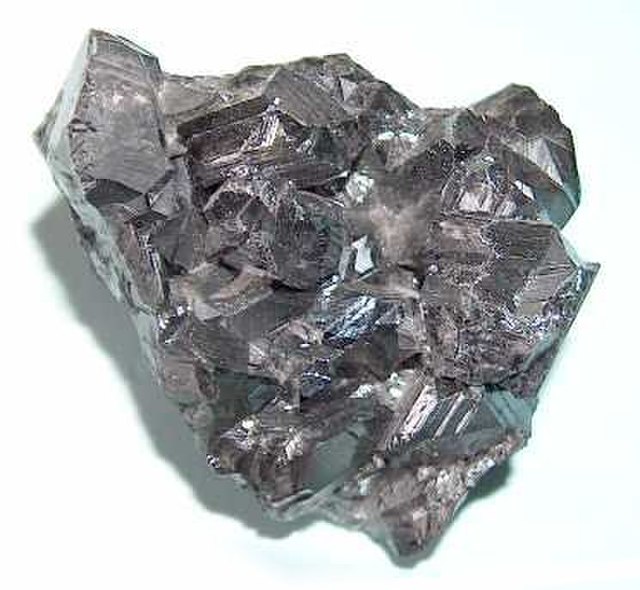Zinc is a chemical element; it has symbol Zn and atomic number 30. It is a slightly brittle metal at room temperature and has a shiny-greyish appearance when oxidation is removed. It is the first element in group 12 (IIB) of the periodic table. In some respects, it is chemically similar to magnesium: both elements exhibit only one normal oxidation state (+2), and the Zn2+ and Mg2+ ions are of similar size. Zinc is the 24th most abundant element in Earth's crust and has five stable isotopes. The most common zinc ore is sphalerite (zinc blende), a zinc sulfide mineral. The largest workable lodes are in Australia, Asia, and the United States. Zinc is refined by froth flotation of the ore, roasting, and final extraction using electricity (electrowinning).
Zinc
Sphalerite (ZnS)
Zinc acetate, Zn(CH 3CO 2) 2
Zinc chloride
Chemical symbols are the abbreviations used in chemistry, mainly for chemical elements; but also for functional groups, chemical compounds, and other entities. Element symbols for chemical elements normally consist of one or two letters from the Latin alphabet and are written with the first letter capitalised.
Dalton's symbols for the more common elements, as of 1806, and the relative weights he calculated. The symbols for magnesium and calcium ("lime") were replaced by 1808, and that for gold was simplified.





